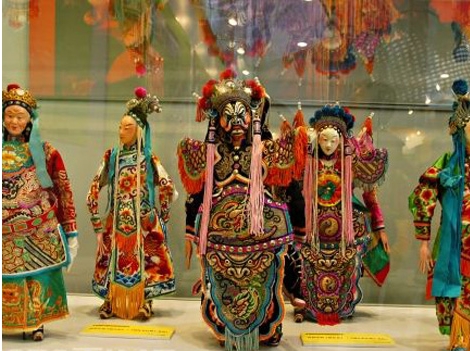
Zhangzhou puppet head carving is a special workmanship of props making for puppet show. It is one of the folk arts and crafts mainly spreading over Zhangzhou, Xiamen, Quanzhou and their surrounding areas of Fujian Province. Zhangzhou puppet carving, which originated in the Jin Dynasty and flourished in the Tang Dynasty, has enjoyed a history of nearly 2,000 years.

Zhangzhou puppet features precise mold, refined carving and delicate colored drawing, preserving the painting style of the Tang and Song Dynasties. The puppets catch the disposition of different characters perfectly through appropriate exaggerations, which represent a local feature. The puppet heads are classified in five major roles: Sheng (Male role), Dan (Female role), Jing (Painted face male role), Mo (Male role of old age) and Chou (Clown). In addition, there are roles of immortal, specter and animal, as well as Lord Guan, Cao Cao, and the heroes in Outlaws of the Marsh, etc. The face is of vital importance to the puppet head. When carving the face, the craftsmen pay much attention to the "Five Shapes and Three Bones", which refers to two eyes, the mouth, two nostrils (five shapes) and brow bone, malar bone and chin bone (three bones). The five sense organs of different features are designed according to the roles' physiognomy, disposition, status, experience and temperament, while the mold, line and color are well used to catch the roles' mien and internal quality. Hence the wooden puppets are as vivid as true men. Apart from the carving technique, Zhangzhou puppet carving has a high standard of discerning and selecting the raw material of camphor wood and preparing the coating material. It usually costs two or three days to finish one piece of work, and it will cost much more time to portray the figure's unique inner world. The hereditary coating material also plays an important part in the puppet carving. Every piece of work is coated scores of times, so that the wooden puppets will not lose color or become deformed.
